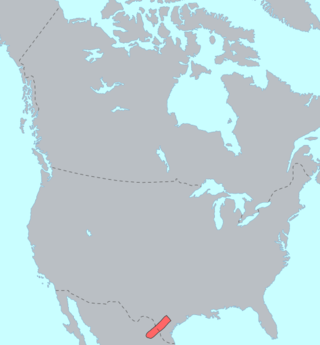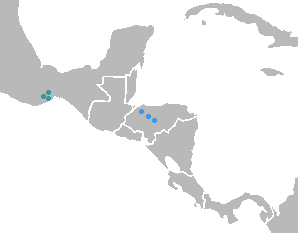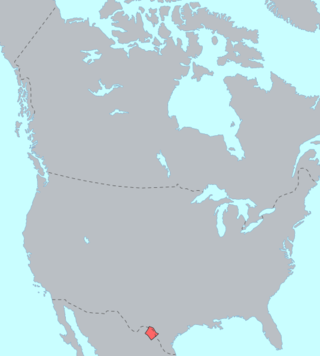
The Indigenous languages of the Americas are the languages that were used by the Indigenous peoples of the Americas before the arrival of non-Indigenous peoples. Over a thousand of these languages are still used today, while many more are now extinct. The Indigenous languages of the Americas are not all related to each other, instead they are classified into a hundred or so language families, as well as a number of extinct languages that are unclassified due to the lack of information on them.

Penutian is a proposed grouping of language families that includes many Native American languages of western North America, predominantly spoken at one time in British Columbia, Washington, Oregon, and California. The existence of a Penutian stock or phylum has been the subject of debate among specialists. Even the unity of some of its component families has been disputed. Some of the problems in the comparative study of languages within the phylum are the result of their early extinction and limited documentation.

Amerind is a hypothetical higher-level language family proposed by Joseph Greenberg in 1960 and elaborated by his student Merritt Ruhlen. Greenberg proposed that all of the indigenous languages of the Americas belong to one of three language families, the previously established Eskimo–Aleut and Na–Dene, and with everything else—otherwise classified by specialists as belonging to dozens of independent families—as Amerind. Due to a large number of methodological flaws in the 1987 book Language in the Americas, the relationships he proposed between these languages have been rejected by the majority of historical linguists as spurious.
Coahuiltecan was a proposed language family in John Wesley Powell's 1891 classification of Native American languages. Most linguists now reject the view that the Coahuiltecan peoples of southern Texas and adjacent Mexico spoke a single or related languages. Coahuiltecan continues to be a convenient collective term for the languages and people of this region.
Comecrudo is an extinct Pakawan language of Mexico. The name Comecrudo is Spanish for "eat-raw"; Carrizo is Spanish for "reed". It was best recorded in a list of 148 words in 1829 by French botanist Jean Louis Berlandier. It was spoken on the lower Rio Grande near Reynosa, Tamaulipas, in Mexico. Comecrudo has often been considered a Coahuiltecan language although most linguists now consider the relationship between them unprovable due to the lack of information.
Garza is an extinct Pakawan language of Texas and Mexico. It is known from two tribal names and twenty-one words recorded from the chief of the Garza by Jean-Louis Berlandier in 1828. At that time, the Garza all spoke Spanish and were acculturated. The Garza may have been the same as the Atanguaypacam tribe recorded in 1748. The Garza were called something like Meacknan or Miákan by the neighboring Cotoname while they called the Cotoname Yué. Garza is Spanish for "heron."

Coahuilteco was one of the Pakawan languages that was spoken in southern Texas and northeastern Coahuila (Mexico). It is now extinct.

The Yuman–Cochimí languages are a family of languages spoken in Baja California, northern Sonora, southern California, and western Arizona. Cochimí is no longer spoken as of the late 18th century, and most other Yuman languages are threatened.

Plateau Penutian is a family of languages spoken in northern California, reaching through central-western Oregon to northern Washington and central-northern Idaho.

Tequistlatec, also called Chontal, are three close but distinct languages spoken or once spoken by the Chontal people of Oaxaca State, Mexico.
Mamulique is an extinct Pakawan language of Nuevo León, Mexico.

Atakapa is an extinct language isolate native to southwestern Louisiana and nearby coastal eastern Texas. It was spoken by the Atakapa people. The language became extinct in the early 20th century.
Jean-Louis Berlandier was a French-Mexican naturalist, physician, and anthropologist.

Solano is an unclassified extinct language formerly spoken in northeast Mexico and perhaps also in the neighboring U.S. state of Texas.

The Yuki–Wappo or Yukian languages are a small language family of western California consisting of two distantly related languages, both now extinct.

The Yana language is an extinct language that was formerly spoken by the Yana people, who lived in north-central California between the Feather and Pit rivers in what is now the Shasta and Tehama counties. The last speaker of the southernmost dialect, which is called Yahi, was Ishi, who died in 1916. When the last fluent speaker(s) of the other dialects died is not recorded. Yana is fairly well documented, mostly by Edward Sapir.
The Gulf languages are a proposed family of native North American languages composed of the Muskogean languages, along with four language isolates: Natchez, Tunica, Atakapa, and (possibly) Chitimacha.

Quinigua is an extinct language that was spoken in northeastern Mexico. Quinigua was spoken between the Sierra Madre Oriental and the Sierra Tamaulipa la Nueva, and between the Rio Grande and the Rio del Pilón Grande. It has no apparent relatives and remains unclassified.
Aranama (Araname), also known as Tamique, is an extinct unclassified language of Texas, USA. It was spoken by the Aranama and Tamique peoples at the Franciscan mission of Espíritu Santo de Zúñiga. It is only known from a two-word phrase from a non-native speaker: himiána tsáyi 'give me water!'. Variations on the name are Taranames, Jaranames ~ Xaranames ~ Charinames, Chaimamé, Hanáma ~ Hanáme.
The Pakawan languages were a small language family spoken in what is today northern Mexico and southern Texas. All Pakawan languages are today extinct.












